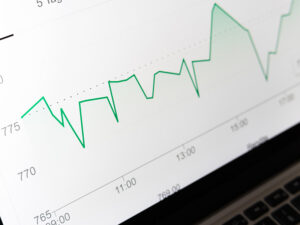How Suppliers Can Make the Most of Attending an Exchange Event

You’ve committed to meet with buyers during an exchange event. You’re on your way to establishing strong customer relationships, but now the real work begins: Preparation for the event. Exchange events are a cost-effective way to meet with many prospective buyers in a short amount of time. Because appointments set during exchange events are mutually agreed to by buyer and supplier, these leads should be considered “warm” before you even walk into the event. But there are a few things you can do to turn up the heat on those potential client relationships and maximize your investment in the event:
Get to know the venue
Minimize your chances of showing up late to an appointment by familiarizing yourself with the venue ahead of time. If the exchange event is held at a resort, look up its location and how to get there ahead of time. Find out where to park. Walk over to the meeting rooms the day before and scope them out, if possible, so you know exactly where to go before your first appointment.
If the exchange event is virtual, log onto the platform at least a couple days in advance to set up your profile and click around so you’ll know how to enter the event and navigate to the right “rooms” when the event begins.
These are little things that don’t take much time, but collectively, they will make the first morning go more smoothly while giving you a small confidence boost!
Know how an exchange event flows
Exchange events are meetings that consist of a series of pre-scheduled one-on-one appointments between you and buyers interested in your company’s product offerings. These smaller trade events host 120-150 attendees who make trusting, friendly relationships that mutually benefit each party. They typically include receptions and meals so that all attendees have extra time to chat and exchange ideas. Suppliers who have attended exchange events say the format can be exhausting because you’re always “on” as you network with multiple potential clients throughout the day and evening. But they also say that exchange events are so productive that attending is well worth the cost – and the rest needed afterward.
Create some event-specific marketing materials
You’re not the only supplier buyers will meet with during the exchange event. Make your company stand out by creating some marketing materials tailored to the event and the buyers there. Your marketing efforts could be as simple as some fliers or pamphlets that detail your background as an industry professional and company rep. You might create an email template that thanks the buyers you meet with for their time and contains your contact info, an overview of your company’s offerings, and blank space for you to fill in a short recap of your conversation. You would then personalize this email according to your individual conversations before sending it to buyers. Some companies set up microsites – small, relatively simple websites – just for exchange events that echo the theme and branding of the event and include more detail about the company’s offerings. It’s a way for suppliers to continue the personalized conversations they have at exchange events in a format that’s convenient to all.
However you decide to show off your company, investing a little time and budget into exchange event-specific marketing materials carries the one-on-one feeling between you and potential buyers long after the event.
Make a “must meet” list
Before the exchange event, log on to the event’s website and spend some time browsing the profiles of buyer attendees to determine which ones you think you can best serve. You can request an appointment with them during the event through the event portal. If they accept, your meeting will be automatically added to both of your calendars.
If a buyer is fully booked for the exchange event, make a note to yourself that you want to speak with them during a break or meal. Exchange events are small for this very reason – to allow all attendees to introduce themselves and have the opportunity to converse, even if it’s not during an official appointment.
Know what makes your company special
Come prepared to talk about how your team differs from the market. What makes your offerings stand out from the competition? Superior quality? Excellent customer service? Special rebates? Know your brand’s strengths as well as your weaknesses and how to address them.
Be prepared to address company culture
This includes your company’s culture. How does your company communicate with clients? What happens when there is a disagreement? Can your teams understand each other and build a solid partnership moving forward? Understanding how your team operates and your ability to adapt to other work styles has the ability to leave a huge impression on a potential customer.
Show off testimonials
Don’t hesitate to brag on your company! Buyers consistently seek out testimonials from fellow industry professionals before making purchases. Have a set of testimonials from a variety of industry roles to communicate a sense of proven reputation and success.
Know how your company is perceived
Additionally, more buyers are focusing on who they’re buying from in addition to what they’re purchasing. They want to do business with companies whose values align with theirs. What does your company culture say about your values, purpose and goals? How will you answer questions or concerns from buyers who like your product, but might be hesitant to work with your company based on other factors?
Buyers usually do their homework on the suppliers they plan to meet. Know yourself and meet them where they are on their purchasing journey.
Compare yourself to your competition
Outline your pricing and quality as it relates to your competition. Know why your offerings and pricing differ, and how a buyer is making a wise investment with your company versus others. Buyers appreciate when a company is upfront about how they create products and set pricing, and how that compares to other vendors they’re considering because that reduces the amount of research they must do. A competitor comparison that you frame allows the buyer to better understand why you might be the better option for them. Bring extra copies or send them electronic copies of comparison materials they can share with their internal team.
Know the buyers you meet
Learn about the companies and representative you plan to meet one-on-one with at the event. Understand their history, their audiences and their goals. Learn something about the rep; a commonality between you and them can make for a good icebreaker or point of common understanding. Buyers appreciate meeting with someone who has taken the time to know their background so that the majority of the conversation can focus on present and future needs, and how you the supplier can fulfill them.
Know what to ask buyers
What do you want to learn from the buyers you’ll meet with at the exchange event? Prepare a list of questions that are essential for qualifying a buyer. Some sample questions from past supplier attendees include:
- What are your project needs?
- What is your end goal regarding use of our product/service?
- How do you serve your clients?
- What is the process for implementing your service?
- What is your budget?
- What is your timeline or purchasing this type of product?
- How much staff time are you able to devote to product training?
- Are you facing any limitations we haven’t otherwise discussed?
- Do you require an exclusive agreement?
- What kind of support do you expect from us after the initial training?
Be transparent
Be transparent about your ability to follow through with a buyer’s purchase. The number one pain point buyers report regarding suppliers is transparency about the supplier’s ability to scale up products or services supplied after a contract is finalized. Be honest about what your team can realistically deliver and on what timeline. It’s tempting to overpromise, but this will hurt your long-term reputation.
Meet with an open mind
Not everyone at an exchange event is going to be a fit for your products or services. That doesn’t mean an appointment spent with a buyer who turns out to be a non-qualifier is a waste of time. As their organization grows and their needs change, they might become a qualified client. And if you made a good impression on them during your appointment, you’ll be one of their first calls when they’re searching for new solutions. Keep an open mind about all buyers at an exchange event. You might not make a sale right away, but you’re still planting seeds that could bloom later.
Minimize your distractions
Exchange events are time away from your normal job responsibilities, but you’re still working in pursuit of company goals! You’ll get the most out of your investment in an exchange event if you can set aside as many distractions from home and your normal job responsibilities as possible. Let your co-workers know that while you’ll be reachable in case of emergency, you’ll otherwise be “off the grid” and not available to answer questions or work on projects while you attend your appointments. Ask your family to accommodate your full schedule for just a couple days.
This tip is especially important if you’re attending a virtual exchange event. The temptation to check emails, surf the web or work on normal projects will be strong. But you’ll see more return on your time and company attendance fee if you can close the other tabs on your web browser, shut down your email, and turn off your cell phone (or at least silence your ringer) while you’re in meetings or between meetings. Keep your focus on the people you’re meeting and your goals for each appointment, and you’ll achieve more.
If you’re logging in remotely, try attending from somewhere out of the ordinary: your kitchen table instead of your home office, your office’s conference room instead of your desk, or a hotel room if you can afford to splurge. The change in surroundings may lessen the temptation to deal with everyday tasks instead of giving full attention to your appointments.
Take notes on paper
It’s quick and easy to type notes on a laptop or complete a buyer profile on an iPad while gathering their information but consider swapping out your keyboard for a notebook during your appointments. Psychological research shows that we remember more when we take notes on paper. Plus, it’s perceived as less rude if you’re jotting notes down on a pad of paper than if you’re staring at a screen, trying to make sure you’ve completed all fields when you really should be paying attention to the person sitting across from you.
If you’re attending virtually, taking notes on paper allows you to fully dedicate your screen to a view of the person you’re meeting with, which shows respect for their time as well.
Take a hike
We mean this in a literal way! Research shows that getting up from your meeting station (if you’re meeting in person) or desk (if you’re attending a virtual exchange event) and going for a walk can improve focus, aid with circulation, and generally make you feel better. When you feel better, you’ll be more productive. In between appointments, take 10 to 15 minutes to walk around the resort, your neighborhood, or your office park. You’ll feel refreshed and ready to take on the rest of the day’s schedule.
With a little preparation, you can fully realize the benefits exchange events offer. Instead of spending hours calling or traveling to meet with potential buyers, you can meet with a couple dozen of them in just 48 hours through an appointment-based event. Consider these tips your ticket to an optimal exchange event experience!
What tips would you add to this list?



